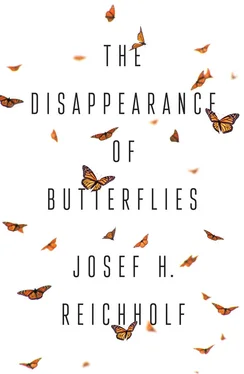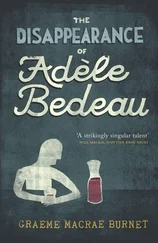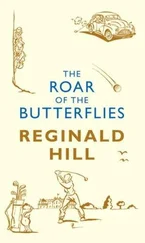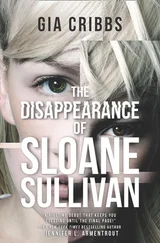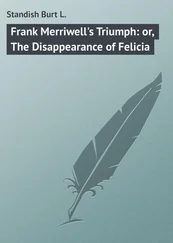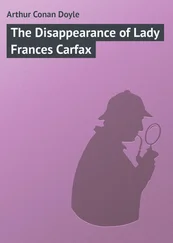The same is true for the limitation of our freedom of expression under pressure from ‘political correctness’. Whether we say ‘plant protection products’, as some demand, or ‘poisons’ does not change their effect, since that is what they are supposed to be: substances that kill what is supposed to be destroyed. Moreover, I have been unable to avoid writing in general terms of ‘agriculture’, ‘maintenance measures’ or ‘nature conservation’. Farmers, if they so choose, can farm in an insect-friendly manner; a maintenance squad that cares for roadside verges can sometimes do this without mowing down all the grasses and flowers; and gardens can be designed in a very butterfly-friendly way. But the expressions ‘agriculture’, ‘landscape and garden care’ or even ‘nature conservation’, when referring to organizations and government works, are correct for the typical circumstances, since certain consequences emanate from them, and this book is generally concerned with these. For this reason, the impact of my statements will also depend on the spirit in which this book is read: I wrote it from a sense of responsibility that I feel we owe to future generations. Many people, a great many people, have been commenting on industrial agriculture for several decades, but they are still too few to achieve the political pressure that would be required to bring about a change for the better.
Part I The Biodiversity of Lepidoptera
A Review of 50 Years of Butterfly and Moth Research
My records prevent me from creating rose-tinted memories of past conditions. I started keeping records on nature on 15 December 1958, and I therefore know, for example, that we did not have a ‘white Christmas’ in the Lower Bavarian Inn Valley 60 years ago, but it was, instead, two degrees above zero with light rain. On 2 January 1959, I noted that, outside on the River Inn, on the completely ice-free reservoir, I counted the following numbers of water birds: 800 mallards, 50 tufted ducks, 69 bean geese and 200 coots. Most of the numbers were rounded up, since I was not able to produce more accurate figures using my small binoculars from where I stood, half a kilometre away. I was not given a relatively powerful telescope until a few years later. As I pulled out and glanced through my old records in the course of preparing this book, I also came across a page with four butterflies that I had drawn myself. Astonished, I looked at it and read what I had written about the pictures ‘drawn from my collection’. Next to a swallowtail and a pair of Adonis blues, Polyommatus bellargus , I had drawn a large and striking black and white butterfly, a great banded grayling, and labelled it with the scientific name that was customary at the time, Satyrus circe. This discovery surprised me, since the beautiful ‘Circe’ that flies in such an elegant manner has long vanished from my region. It is largely extinct in Southern Bavaria, just like numerous other species of butterfly that I knew and observed in my youth.
Some of the species that were considered ordinary in those days do still exist, but they have, in the meantime, become rare or very rare. I also found a fitting example of this in my records. A note dated 12 September 1962 contained an observation that would be considered remarkable today. An almost palm-sized moth flew into the local train when we stopped at a station on our early morning journey to school and landed on the red shirt of my classmate. It was a red underwing, Catocala nupta (see Photo 1). When it is resting, the grey-brown, washed bark-coloured forewings of this large noctuid moth cover the bright crimson hindwings that are bordered with an angled black strip, just inside the outer margin. Not yet aware that moths – like all insects – cannot see the colour red, I wrote: ‘The red underwing was thus attracted by the red colour of the shirt.’ In fact, the red shirt would actually have seemed dark to the moth. To its vision in the so-called ‘grey-scale’, it may well have corresponded to a dark tree bark and the grey scales of its forewings. In the wild, the spot would have been suitable as a resting place during the day for this noctuid moth, which is active at twilight. One may therefore assume that red underwings were so common 50 years ago that one of them got lost in a train, presumably startled from its resting place in the station.
If this type of note from my schooldays was a mere anecdote, then these records would offer nothing further. Indeed, one retains what seems unusual, while the ordinary goes unnoticed. And yet, interesting points can be gleaned from unsystematic memos. I can find plenty of examples in my diaries. For example, the nine-spotted moth (or yellow belted burnet), Syntomis phegea , which has long since vanished from the area, sighted on 1 August 1960, or the caterpillar of the wood tiger, Parasemia plantaginis , recorded on 28 July 1960. The latter is only seen very rarely now. However, all of these and the many other records only show that there used to be Lepidoptera *species that no longer exist there. The true scope of the decline in butterflies and moths and other insects cannot be deduced from the disappearance of individual species. It is quite possible that other species that were not there earlier have appeared during this period. Nature is dynamic: changes can and will always occur. My initial claim that we have lost 80 per cent of the butterflies in the last 50 years refers to their overall frequency and requires much more concrete evidence.
I have already achieved that with birds: my counts of the water birds on the reservoirs of the lower River Inn, which I carried out every two to three days for six years, resulted in my first specialist ornithological publication in 1966. However, a quantitative survey of butterflies and moths was a very different challenge from counting birds that were resting on the banks or swimming on the water. My attempts gradually took form during my zoology studies at the University of Munich. A scientific approach was required for my doctoral thesis on aquatic moths, so I quickly familiarized myself with the five different species of moth that make up the Crambidae family and learnt how to reliably distinguish them by recognizing their flight patterns in the field.
However, given their number, moth and butterfly species require far greater knowledge if one wants to record all of them. The training is far more difficult and time-consuming than getting to know bird life. In southeast Bavaria alone, there are more than 1,100 species of butterfly and moth; for the whole of Bavaria, 3,243 have been reported (as of 2016). Many of these are very small and can only be identified with the help of specialist literature. For birds, there were already very good identification guides in the 1960s, which were not prohibitively expensive. Consequently, my initial engagement was with the bird world rather than with the butterflies. The reason was proximity, in the literal sense of the word: the reservoirs and riparian woods along the lower River Inn, which I could reach on foot or by bicycle, are a bird paradise. They are among the wetlands with the largest numbers of species in inland central Europe. When I started my zoology studies in Munich in 1965, I had already gained professional recognition as an ornithologist, thanks to my native surroundings, and I was familiar with various methods that are employed in field research.
Insects fly towards UV light
During my studies, I became familiar with a method that is more suitable than any other to establishing the abundance of moths. It consists of attracting species that are active at night using UV light. This is no longer done with large mercury-vapour lamps of 1,000 watts, which are used to light up white sheets that have been stretched behind them, as was common practice in the past and as I have attempted myself, but instead by means of an ingenious construction using UV neon tubes of only 15 watts. The moths and other insects are drawn in by this UV light. When they approach, they enter a funnel under the light tubes, leading to a large sack, in which the insects land. In order to offer them a place to hide until the following morning, empty egg cartons or similar are placed in the sack. This collection method does not harm the moths in any way. In the sack they quickly settle down, since the stimulus of the light has been removed. Together with the other insects, the moths are counted the following morning, and identified species by species, to the extent that their species identification is possible. At that point, all the insects are released immediately. In this manner, readily analysable and statistically useable results are achieved, which can be compared, depending on the problem in question, with a similar assembly of the apparatus in another location. This method can even be used to establish frequency and species composition of moths in quite different habitats. This is exactly what I did, starting from 1969. Dr Hermann Petersen perfected the method. I am greatly indebted both to him, and also to Elsbeth Werner for allowing me to use her pesticide-free farm for research.
Читать дальше
